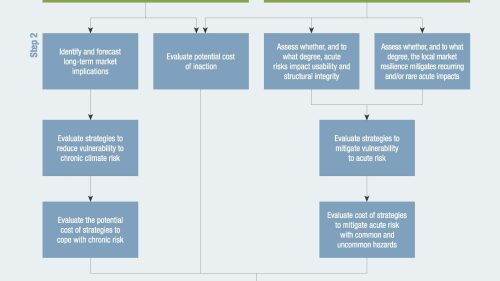• Investors making decisions on an asset-by-asset basis and are moving up the risk curve
• New sources of international capital coming from Angola, Azerbaijan and Malaysia
• China, Australia, Korea still dominate as funders
“The larger and higher profile transactions are the ones using global capital,” said Jon Zehner, global head of capital markets at LaSalle Investment Management, in a general session entitled “Who Has the Capital and Who is Getting It” at ULI’s Spring Meeting in San Diego.
The importance of global capital was further emphasized by John Miller, senior managing director at Tishman Speyer, who highlighted that the $5.3 billion of equity raised by the company since 2010 was sourced from 54 investors, of which 41 were based outside of the United States.
“New sources of major capital are emerging from Angola, Azerbaijan and Malaysia, but I would focus on China, Korea and Australia” said Zehner. “For most investors the first port of call is the U.S., due to transparency and the rule of law. But it is as much about cities, assets and partners as it is about countries.”
This asset-by-asset approach is also the experience of Michael Stedman, senior executive vice president at Union Bank. “The investments are not about product type,” said Stedman. “They are about individual sponsors and assets. Investment is still highly centered on the gateway cities and especially on prime real estate.”
The panel agreed on the significant volume of capital entering the U.S. from China. Miller discussed Tishman Speyer’s recent deal in California, which had seen it secure Chinese investment for a 160 unit condominium scheme in San Francisco. “In this case, our Chinese investors wanted to invest in the U.S., but they also wanted to see how a U.S. developer does business so that they could take back lessons to their own domestic market.” The joint-venture agreement was established within six weeks: “Once they decide to do a deal they move very quickly,” said Miller.
Zehner cautioned that not every Asian investor is ready to move so quickly. “International investors are relationship orientated -- especially in Asia,” Zehner said. “It can take two to three years to do the first deal, but once this is completed the process becomes easier.”
Zehner went on to argue that there was currently an undersupply of mezzanine finance, citing there is an estimated £90 billion ($135 billion) funding gap in the U.K. real estate market alone. However, Charles Fedalen, Executive Vice President Group Head, Wells Fargo CRE believed the reverse to be true and that senior debt was harder to find as it did not provide the necessary returns. However, both did agree that investors were currently looking to take on more risk. Fedalen saw the attraction of mezzanine investments as “largely a search for yield.” “Investors are moving up the risk curve,” said Zehner. “They cannot hit their target returns at a risk level they would like.”




